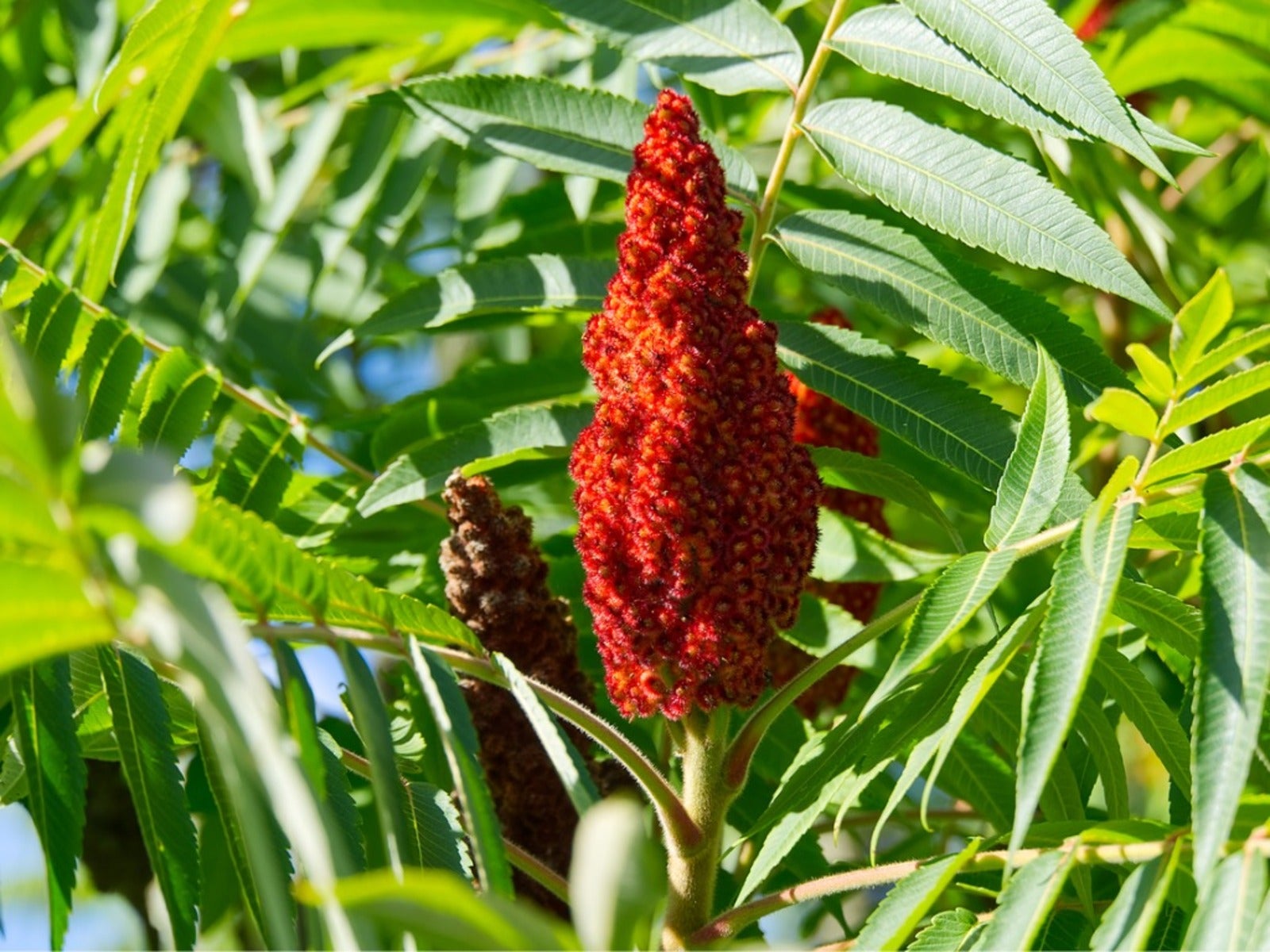How To Harvest And Use Staghorn Sumac


Wild foragers may be aware of a hidden gem that grows wild in North America. It is staghorn sumac. Is staghorn sumac poisonous? This plant is often confused with another sumac that’s in a different genus and can cause topical rashes on contact. Staghorn sumac’s edible red berries are a source of Vitamin C and other nutrients, and make a delicious seasoning or refreshing beverage.
Is Staghorn Sumac Edible?
Staghorn sumac’s scientific name is Rhus typhina. There is another plant by the name of Toxicodendron vernix, or poison sumac, that is often confused with the edible sumac. Poison sumac produces white berries, as well as a compound called urushiol, which can cause severe skin reactions. Staghorn sumac produces red berries and has no such adverse reactions.
Both of these plants have compound leaves composed of delicate leaflets, but there the similarities end. Poison sumac is a relatively uncommon plant, while staghorn sumac is abundant across the northern and mid U.S. and into Canada.
Staghorn sumac is a member of the cashew family, and is extremely edible and safe to consume unless you have an allergy to cashew nuts. Among the most common staghorn sumac uses is as “sumacade,” a lemony beverage.
Recognizing Edible Sumac
Sumac grows in thickets or solitary. It is a bushy tree that can grow 3 to 33 feet (1 to 10 m) tall. The stems are woody and semi-hairy and adorned with pinnate leaves. Each leaf has 11-31 leaflets that are toothed, green on top, and lighter underneath. The yellowish green flowers are small and not decorative but give way to amazing fruits. They are born in clusters of fuzzy drupes. The ripe fruit is red to brownish-red in color. In addition to humans, birds and small animals feast on the mature fruit.
How to Harvest Sumac
Sumac berries may be eaten raw, but the fuzzy texture can make the experience unpleasant. As a trail snack, pop a few into your mouth and suck out the sweet-tart juice before discarding the pith. For broader uses, knowing when to harvest staghorn sumac will ensure the best tasting berries. To harvest whole clusters, use a sharp knife or pruning shears and cut the cluster from the stem. Make sure the berries are a bright color and taste a few to ensure they have reached peak flavor.
When to Harvest Sumac
Expert foragers say to harvest sumac before it has rained, since it appears that rain washes away some of the intense flavor. Sumac is usually ripe in August before autumn rains and before the tree turns its incredible gold color. Watch for birds and other animals snacking on the berries. This is a good clue they are ripe and ready for picking. Separate the fruits from twigs and leaves before you prepare them for digestion.
Sign up for the Gardening Know How newsletter today and receive a free copy of our e-book "How to Grow Delicious Tomatoes".
Uses For Staghorn Sumac
Traditionally, native people had many uses of staghorn sumac as a medicinal and herbal remedy. Modern foragers make a tea or “ade” from the berries. These can either be cold or hot steeped to harness the flavor. Strain out the solids before consuming the sumacade. Depending on your taste, the mixture can be flavored with honey or sugar. Mulled sumac is steeped with spices like cinnamon and cloves. It is then strained and served hot.
Sumac is also a prominent ingredient in Zatar, a popular Middle Eastern seasoning mixture that features sumac and spices such as sesame and thyme. The exact recipe varies by region, but it is delicious on meats or with olive oil and bread.
Storing Sumac
Sumac clusters can be stored in a cool, dark location in a paper bag. The fruits will dry a bit but are still usable for tea or sumacade. Sumac berries can also be dried on a wire frame in the sun or a dehydrator. They are then kept whole or crushed for future use over the winter until a new crop arrives at the end of summer.

Bonnie Grant is a professional landscaper with a Certification in Urban Gardening. She has been gardening and writing for 15 years. A former professional chef, she has a passion for edible landscaping.